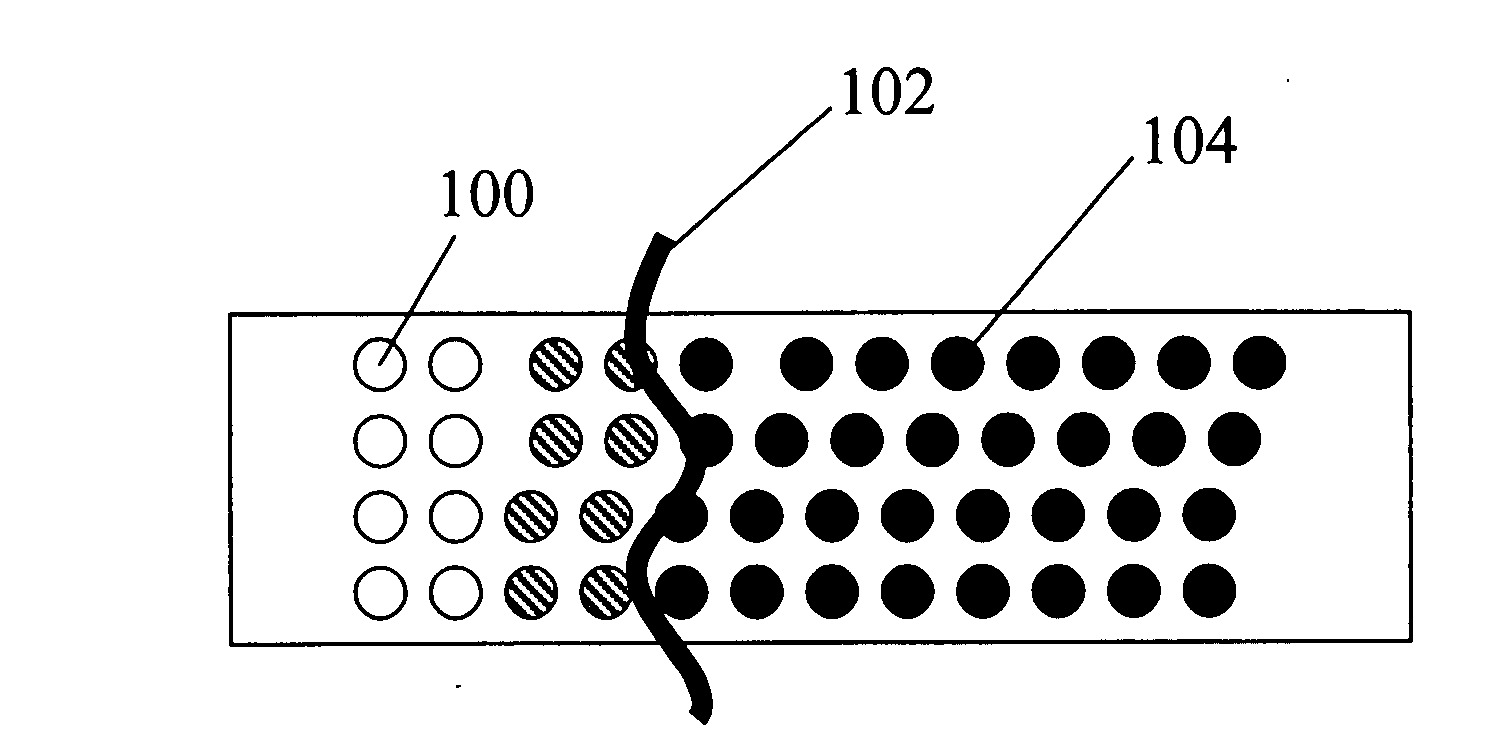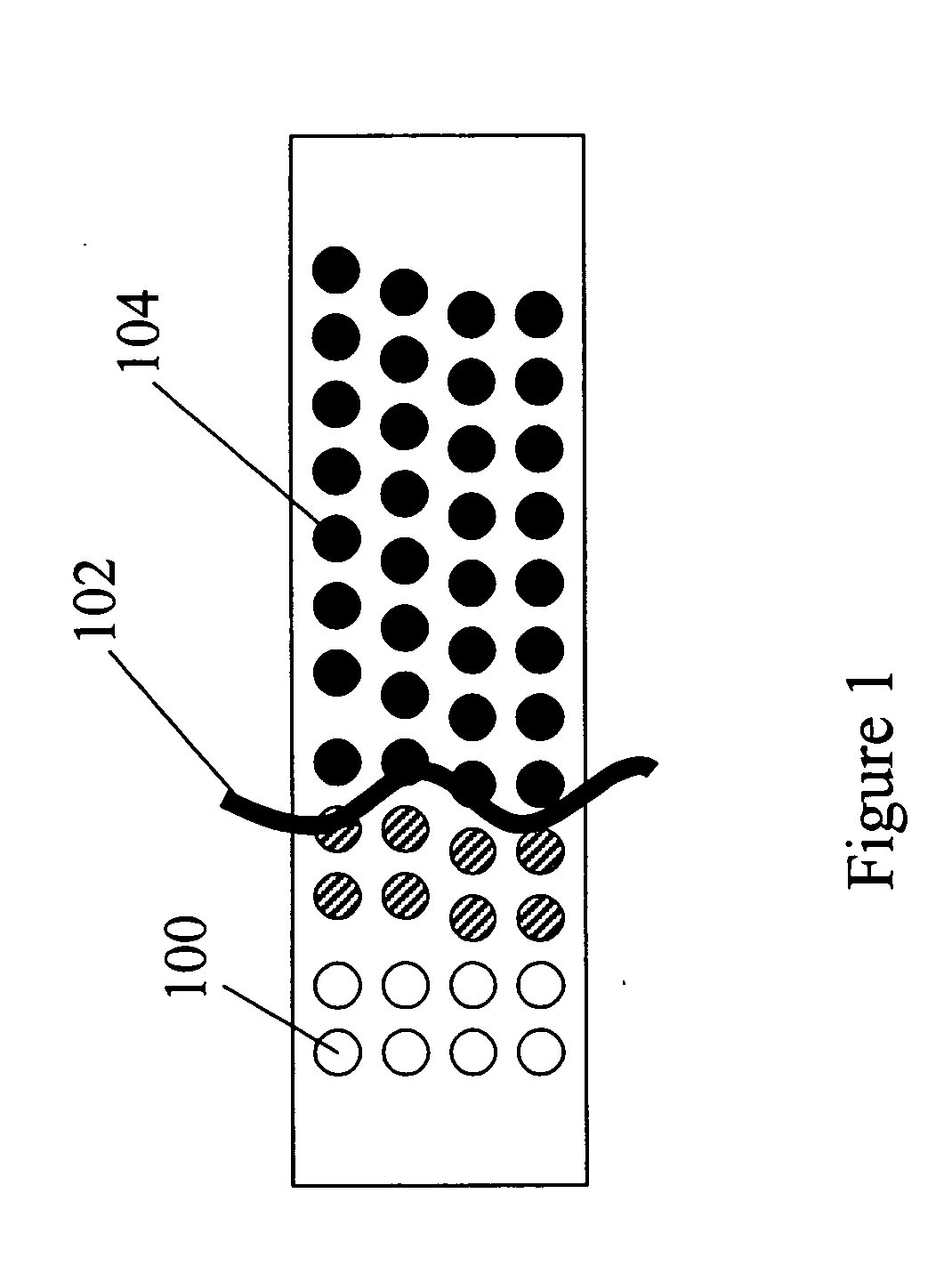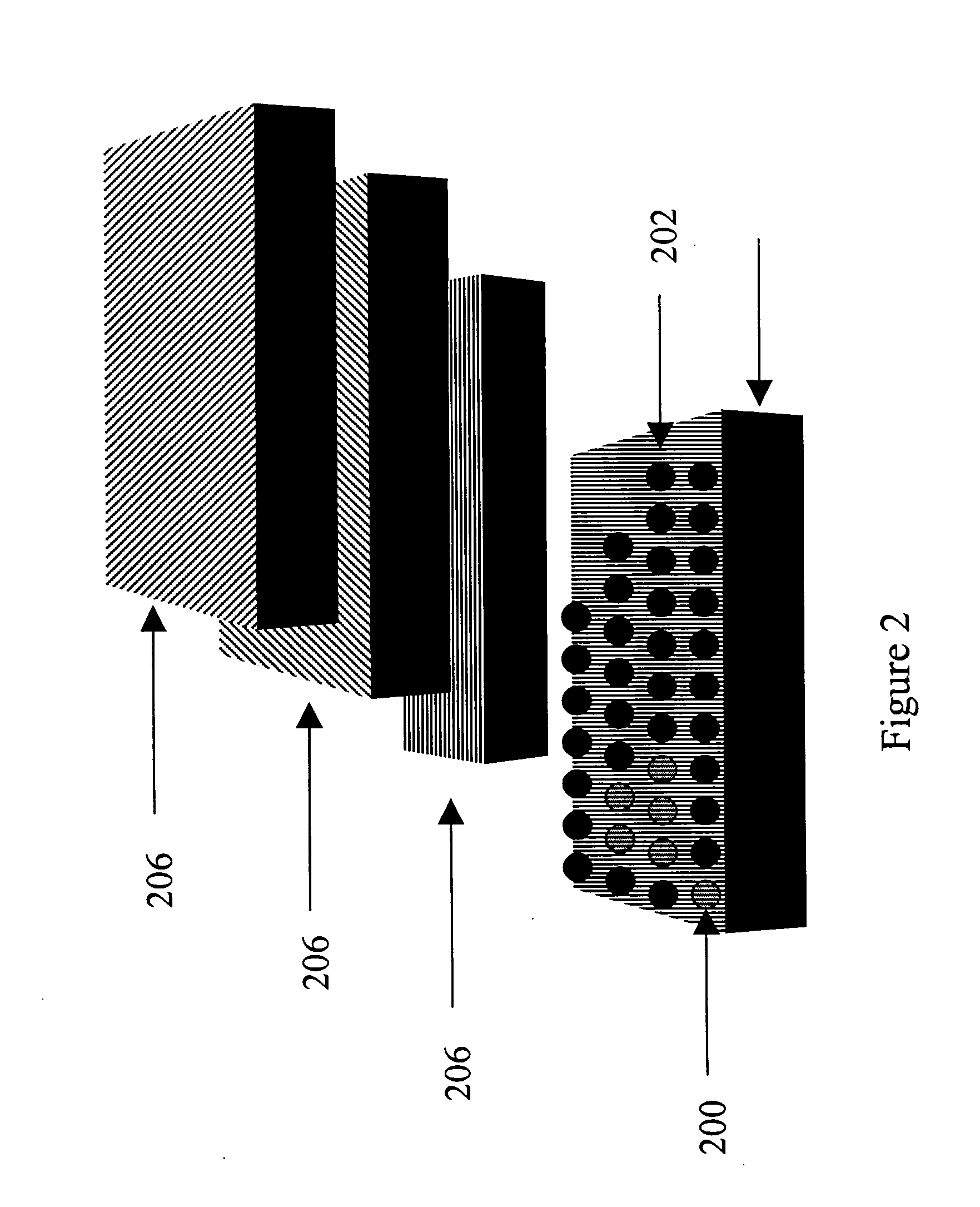Methods and materials for the reduction and control of moisture and oxygen in OLED devices
- Summary
- Abstract
- Description
- Claims
- Application Information
AI Technical Summary
Benefits of technology
Problems solved by technology
Method used
Image
Examples
example 1
Deposition of Cerium Nitrate onto Alumina by Incipient Wetness Impregnation
[0094] Alumina was modified by Ce(NO3)3:6H2O to form a cerium oxide coating (150-200 m2 g) on the alumina using an incipient wetness impregnation technique. About 222 mL (122.77 g) of alumina beads was dried in a vacuum oven at about 110° C. overnight, then cooled to room temperature under vacuum. To this was added a solution of 19.0 g Ce(NO3)3:6H2O in 36.8 g H2O dropwise in a 600 mL beaker. After about 30-40 minutes, all of the solution was added without any observation of outside wetting of the alumina beads. The material obtained was capped by aluminum foil and allowed to equilibrate at room temperature for about 20 hours. The material was then heated to about 110° C. for about 20 hours in a vacuum oven. A sample of the obtained (dry) Ce(NO3)3:6H2O / Al2O3 (containing about 5% Ce) was analyzed by thermogravimetric analysis using a TGA-7 thermogravimetric analyzer from PerkinElmer. Two peaks were obtained, ...
example 2
Efficiency and Capacity Changes of Materials as a Function of the Temperature
[0095] The efficiency of molecular sieve material was tested for capturing water at different temperatures and it was found that the capacity for moisture varied significantly as a function of temperature as shown in Table 1. The temperature dependence is an important parameter since it can affect the device operation. It is well known that materials that operate on the principle of physisorption such as molecular sieves, silica, zeolites, etc., can reversibly absorb moisture. At room temperature molecular sieve 4 A will absorb 9.2 liters of moisture per liter of 4 A material. However, if the temperature of the material is increased, previously absorbed moisture can now be emitted from the device causing the electronic device to fail. Since the applications for the devices are hand held cellular phones, and portable devices, it can be reasonably estimated that the device will be exposed to a large tempera...
example 3
[0099] Non-Limiting and Un-Exhaustive List of Possible Substrates and Reactive Agents Used for the Invention Described Herein.
TABLE 2Matrix of Examples of Macroreticulated Substratesand Organometallic Reactive Agents.styreneVTVIBEVBVNAMSBMSDVBDVNPPYRAKLLAKLSAKLPDAKLMAKLMDAKLZAKL1-XAKL2-XAKL1-FLEAKL2-FLEAKL1-HAKL2-H
Examples listed are not meant to be limiting or exhaustive in scope, but only serve to be representative examples of some possible substrates and reactive agents. Substrates are listed across the horizontal axis while the reactive agents are listed across the vertical axis. [0100] VT=vinyltoluene, VIB=vinyliscpropylbenzene, EVB=ethylvinylbenzene, [0101] VN=vinylnaphthalene, AMS=alpha-methylstryene, BMS=betamethylstyrene, [0102] DVB=divinylbenzene, DVN=divinylnaphthalene, [0103] PPYR=polypyridines such as poly(4-vinylpyridine), poly(2-vinylpyridine), polyquinolines such as poly(4-vinylquinoline), poly(2-vinylquinoline) and analogs thereof.
PUM
| Property | Measurement | Unit |
|---|---|---|
| Diameter | aaaaa | aaaaa |
| Diameter | aaaaa | aaaaa |
| Specific surface area | aaaaa | aaaaa |
Abstract
Description
Claims
Application Information
 Login to View More
Login to View More - R&D
- Intellectual Property
- Life Sciences
- Materials
- Tech Scout
- Unparalleled Data Quality
- Higher Quality Content
- 60% Fewer Hallucinations
Browse by: Latest US Patents, China's latest patents, Technical Efficacy Thesaurus, Application Domain, Technology Topic, Popular Technical Reports.
© 2025 PatSnap. All rights reserved.Legal|Privacy policy|Modern Slavery Act Transparency Statement|Sitemap|About US| Contact US: help@patsnap.com



